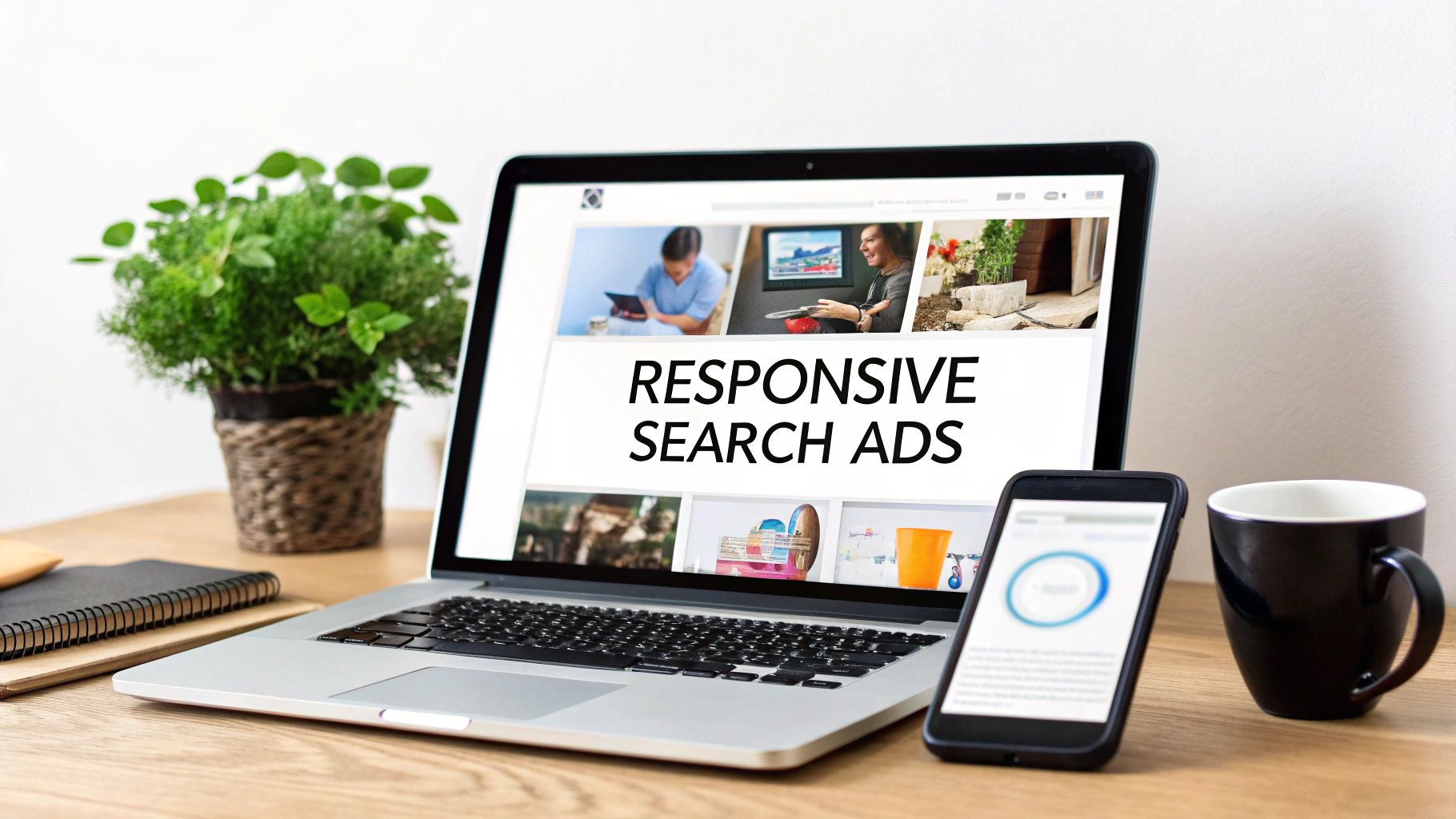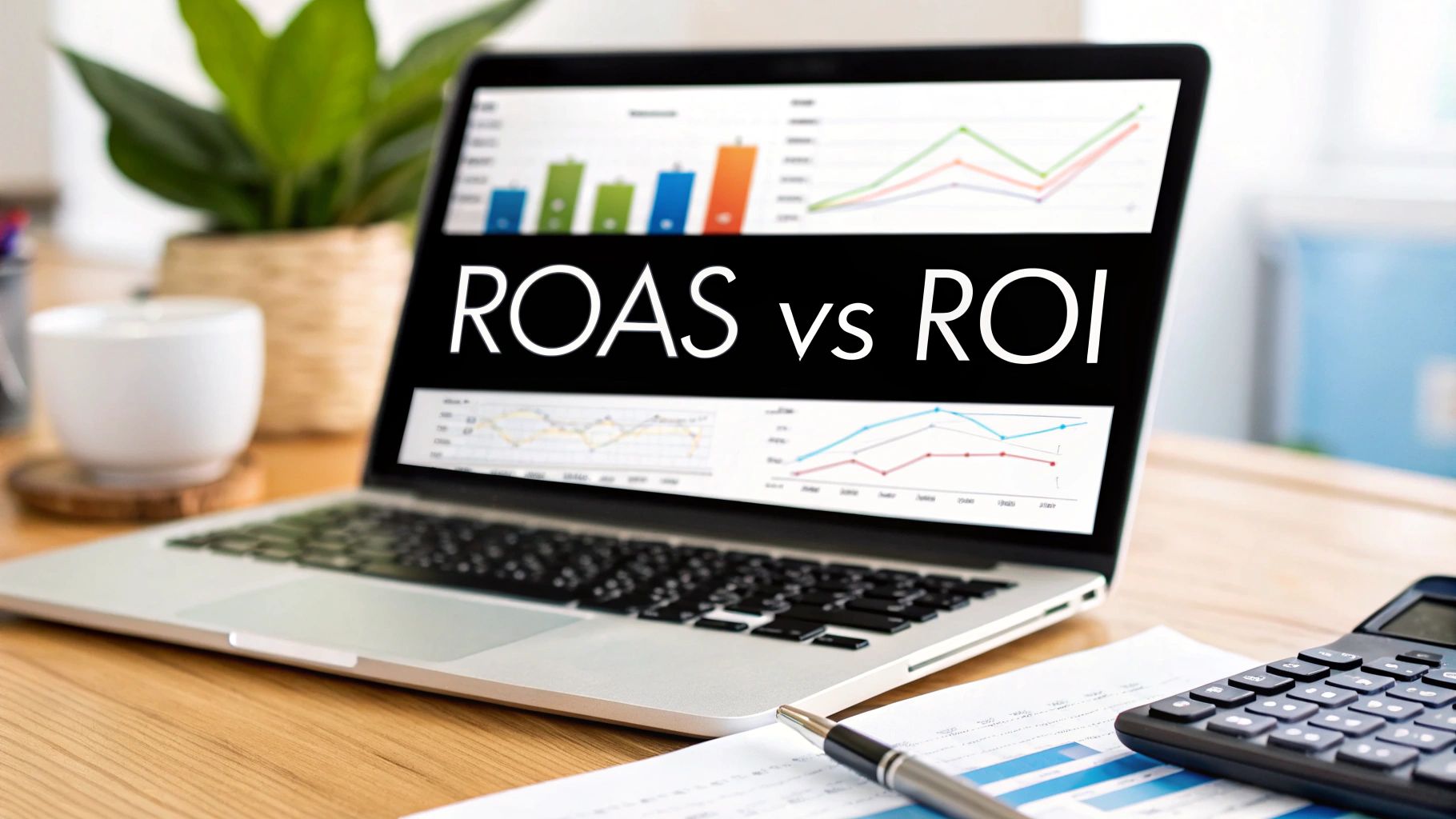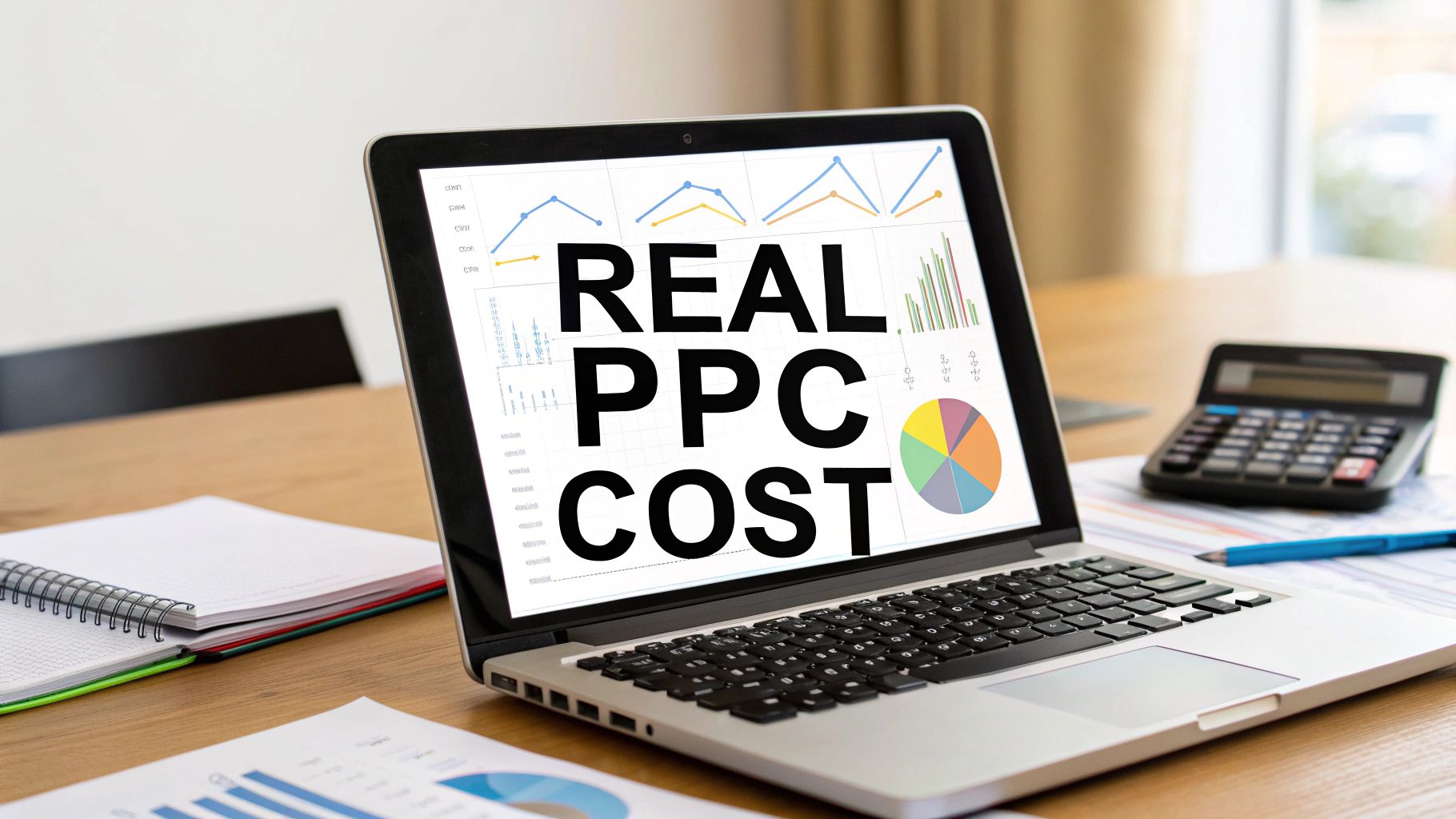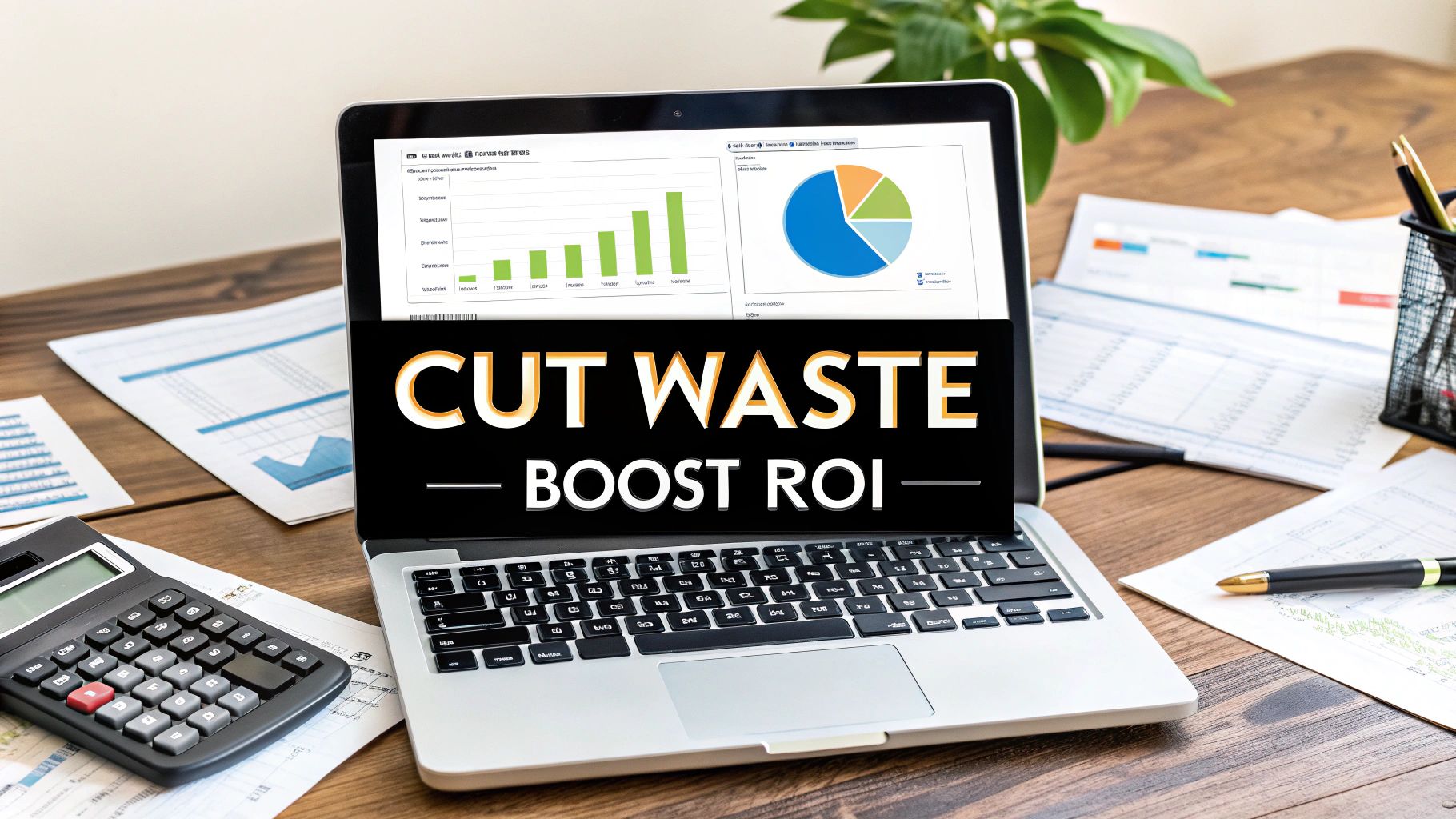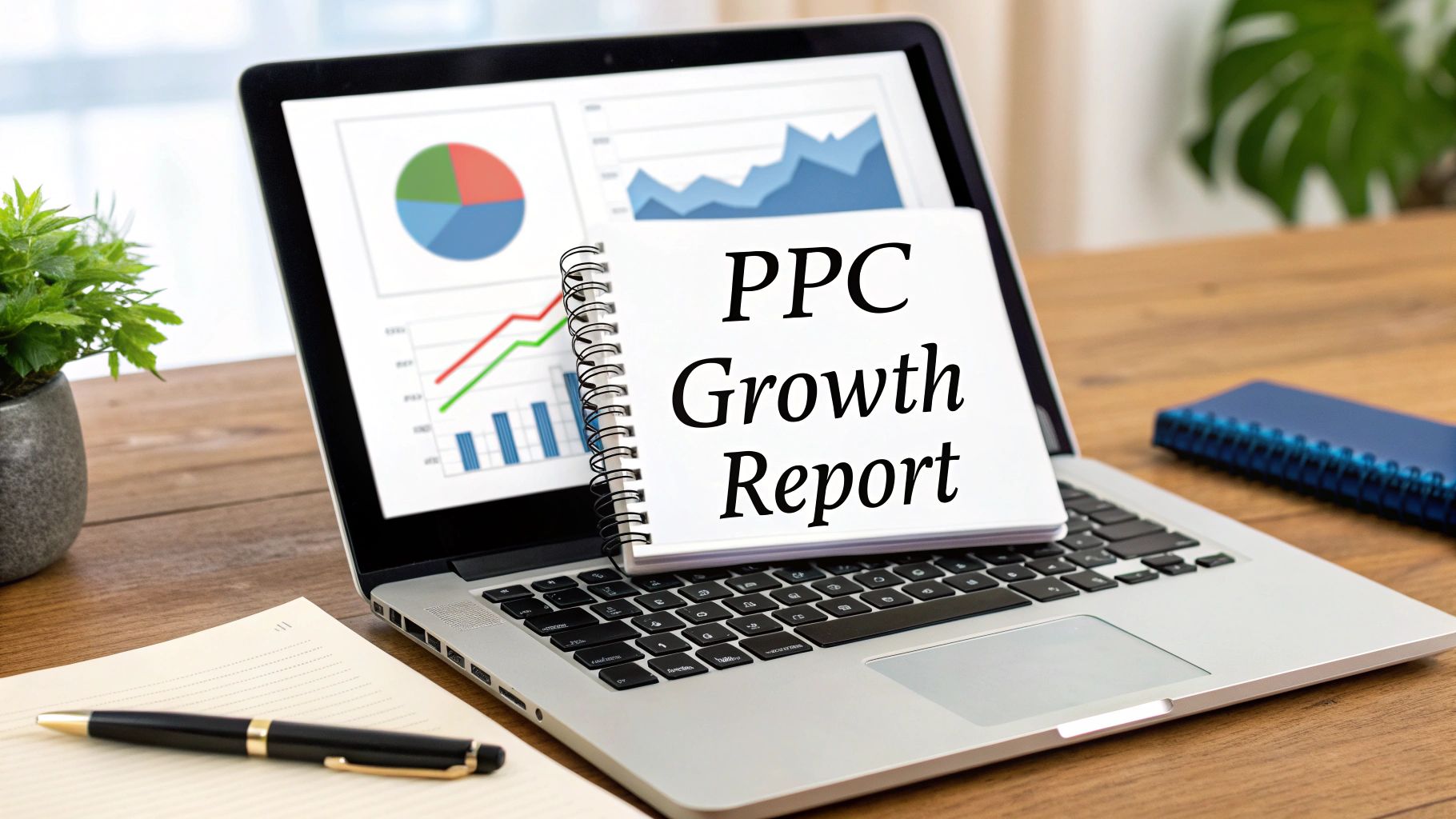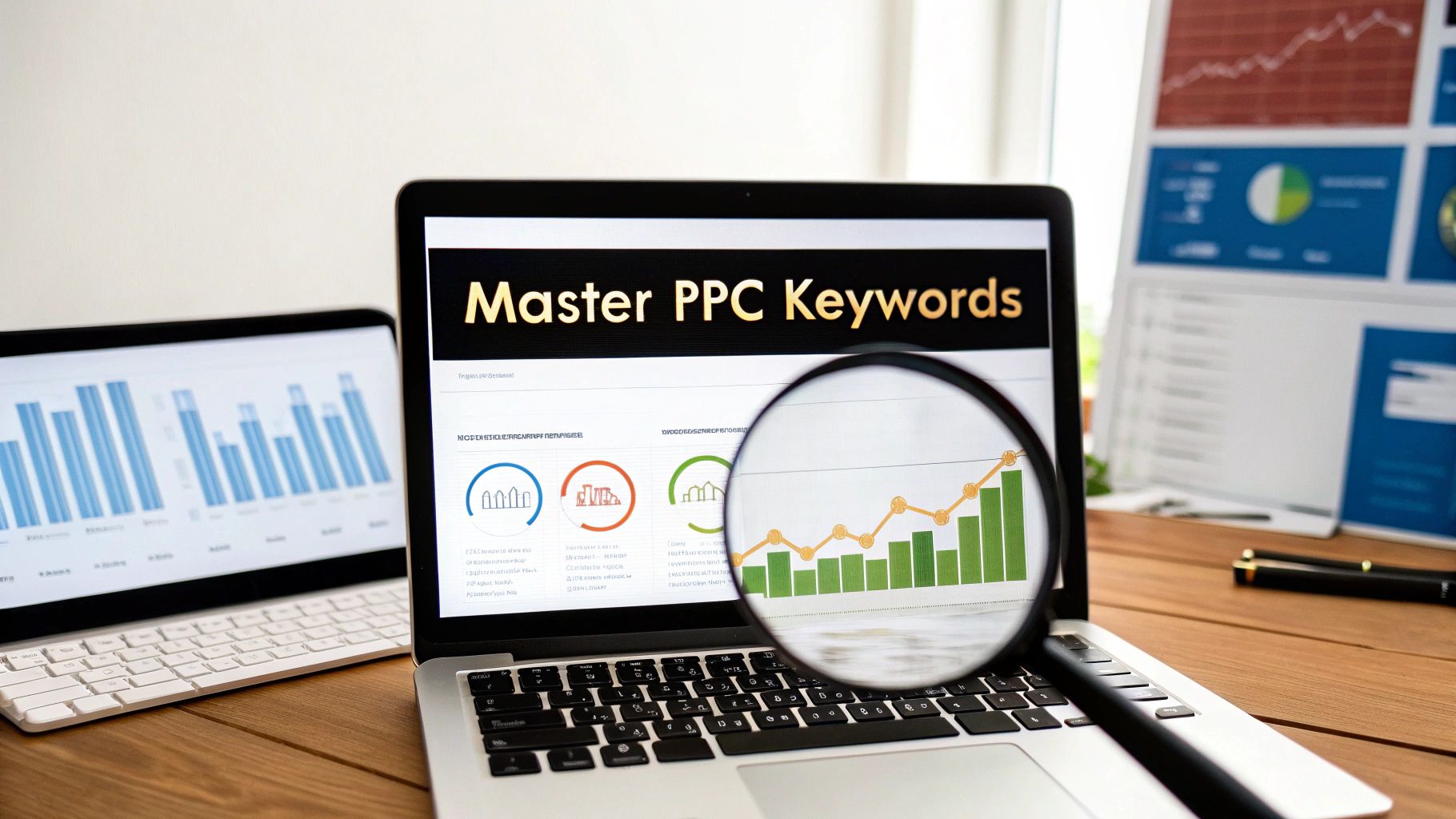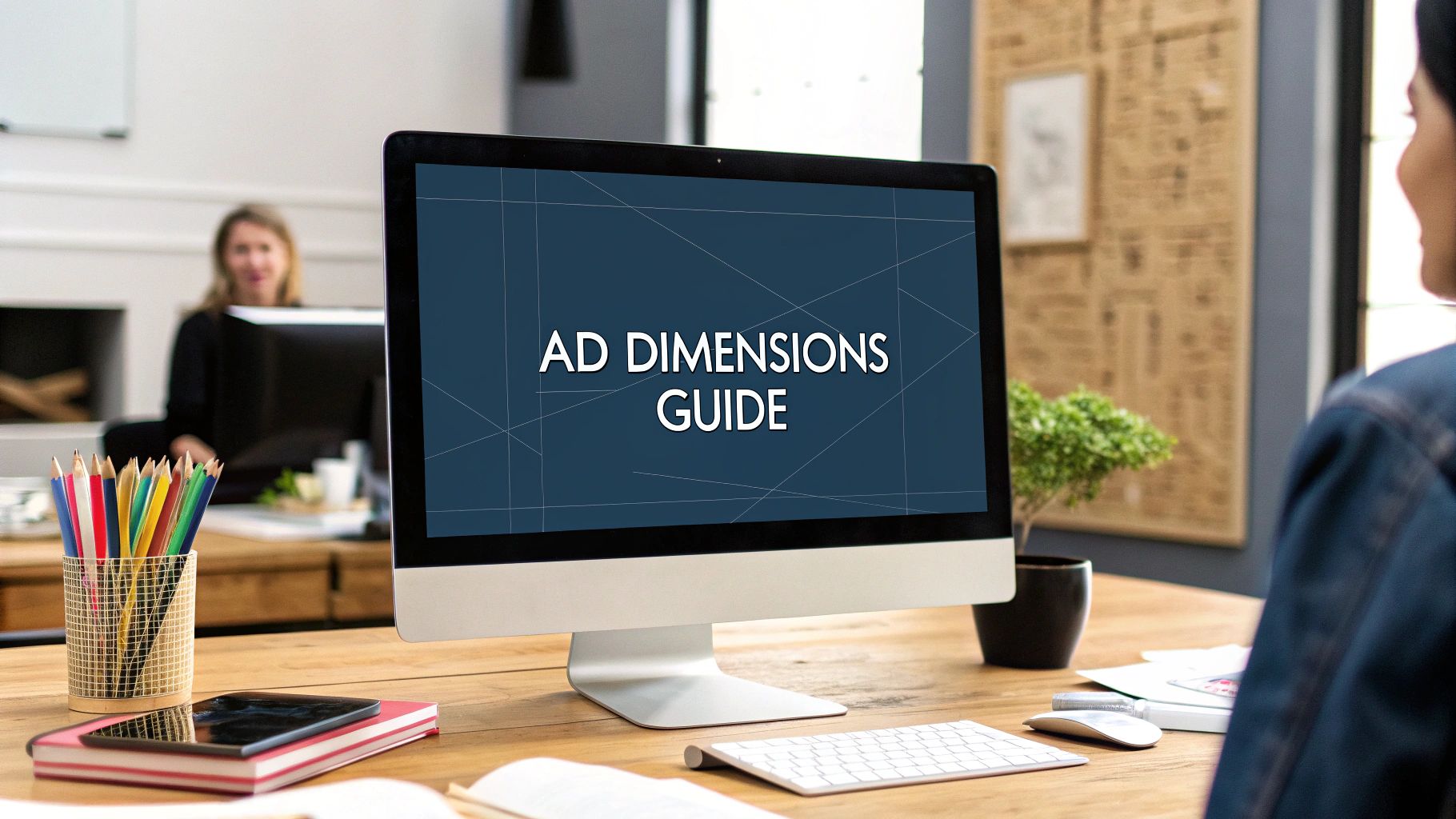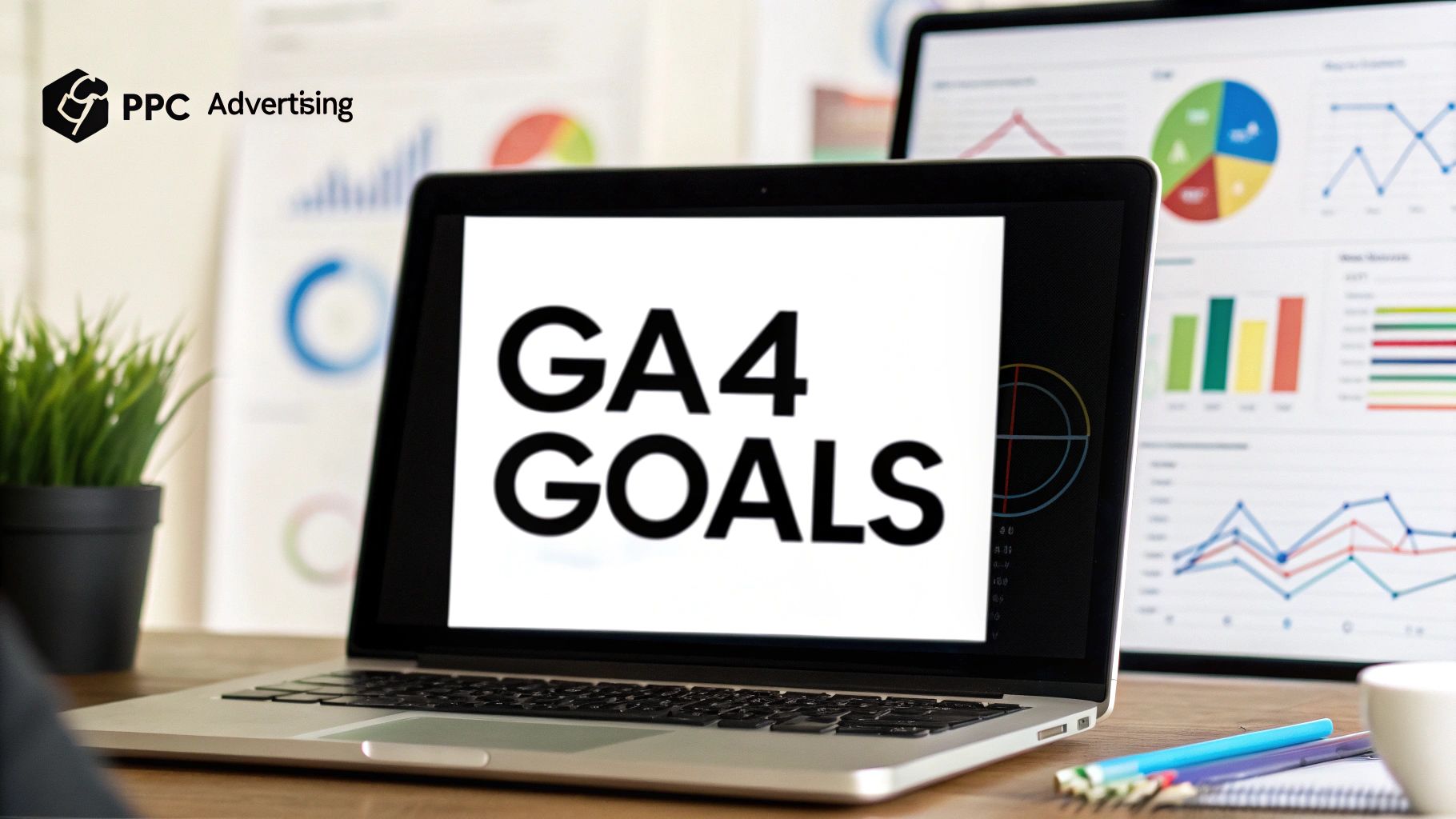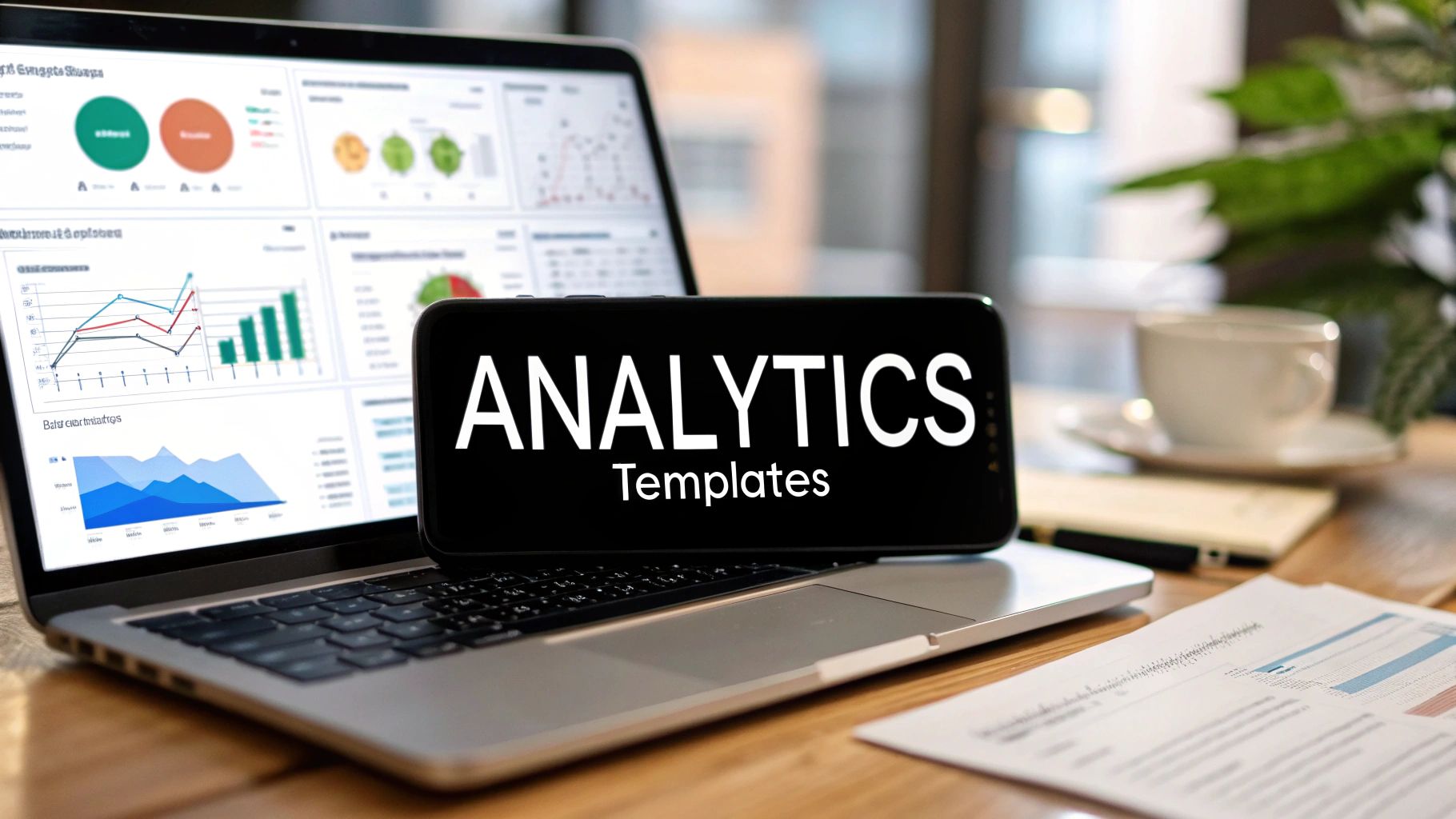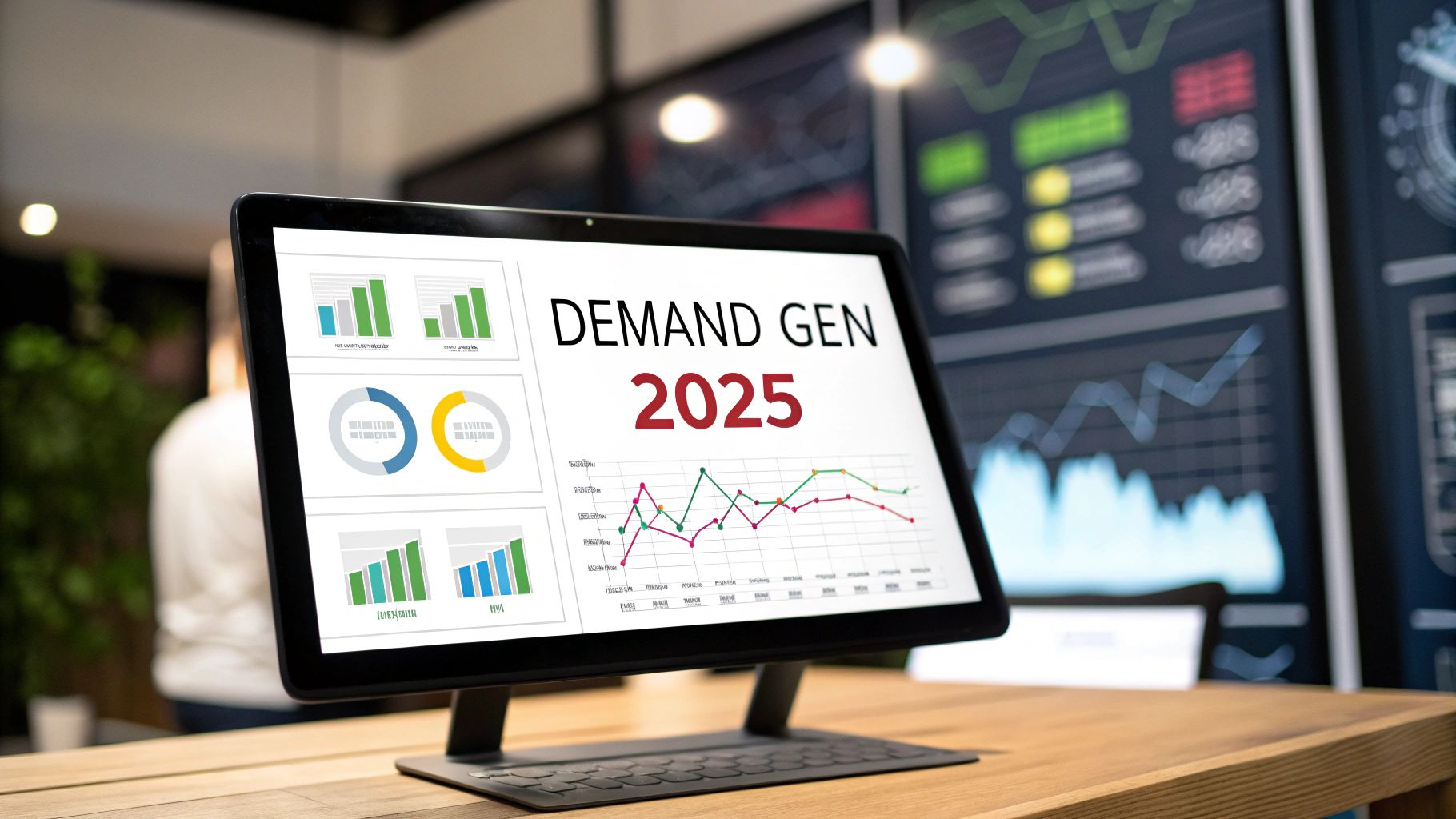How to Measure Advertising Effectiveness
- Chase McGowan
- Sep 12
- 15 min read
Measuring your advertising shouldn't feel like navigating a maze of useless data. It’s not about chasing vanity metrics that agencies use to justify their fees—it's about driving profitable, sustainable growth for your business.
The only way to do that is to focus on two numbers above all else: Return on Ad Spend (ROAS) and Customer Acquisition Cost (CAC). These are the metrics that tell you the real story—how much revenue your ads are actually generating and what it costs you to land a new customer.
Stop Guessing and Start Measuring What Matters
Too many businesses get bogged down in the confusing dashboards that oversized, bloated agencies love to provide. They'll show you a mountain of data—impressions, click-through rates, reach—that looks impressive but tells you almost nothing about the financial health of your business.
It's a classic smokescreen. This overload of "activity metrics" is often used to hide a simple, uncomfortable truth: a lack of real results. But you don't need a hundred different charts to know if your ads are working.
As a specialized Google Ads consultant, my job is to cut right through that noise. My focus is singular: turning your ad spend into measurable, repeatable profit. This completely changes the conversation from, "How many people saw our ad?" to "How many new customers did we acquire, and at what cost?"
The Agency Smokescreen vs. Expert Focus
You have to understand the inherent conflict of interest with large agencies. Their business model often relies on managing bigger and bigger budgets to justify their hefty retainer fees. This incentivizes them to highlight metrics that are easy to inflate but nearly impossible to connect directly to your bottom line.
An independent expert, on the other hand, lives and dies by your financial results. My success is tied directly to yours.
"The core difference lies in accountability. An agency might celebrate a campaign with a million impressions and a low cost-per-click. As your consultant, I only celebrate when your ROAS is profitable and your CAC is sustainable. Everything else is just noise."
This distinction is absolutely critical. Research has shown that a shocking number of ads fail to produce any positive impact, with some even actively harming sales. This happens because less than 1% of advertisements ever undergo objective pre-testing, leading to massive budgets being wasted on campaigns that were doomed from the start.
Prioritizing Growth Over Vanity
To really understand how to measure marketing effectiveness, you have to learn to distinguish between the metrics that make agencies look busy and the ones that actually build your business.
Here's a look at the two different mindsets when it comes to campaign metrics. One keeps you stuck in a cycle of reporting on activity, while the other is laser-focused on actual business impact.
Agency Metrics vs. Business Growth Metrics
Metric Type | What Agencies Show You | What Actually Matters for Your Bottom Line |
|---|---|---|
Top-of-Funnel | Impressions, Reach, Clicks | New Leads Generated, Cost Per Lead (CPL) |
Mid-Funnel | Click-Through Rate (CTR), Cost Per Click (CPC) | Lead-to-Customer Conversion Rate |
Bottom-of-Funnel | "Conversions" (often poorly defined) | Customer Acquisition Cost (CAC), Return on Ad Spend (ROAS) |
Long-Term Value | Brand Lift, Engagement Rate | Customer Lifetime Value (LTV), LTV:CAC Ratio |
See the difference? The left column is full of metrics that are easy to report but hard to act on. The right column contains the numbers that directly inform strategic decisions and drive real growth.
Vanity Metrics (The Agency Way): Think impressions, clicks, and reach. While they aren't totally useless, they don't tell you if you're making money. A campaign can get thousands of clicks and generate zero sales.
Growth Metrics (The Expert Way): This is where ROAS and CAC live. These metrics are tied directly to revenue and profitability, giving you an unfiltered, crystal-clear picture of your campaign's financial performance.
Ultimately, effective measurement is about clarity and impact. It’s about having the confidence that every single dollar you spend is working hard to grow your business, not just to generate a pretty report that gets filed away.
Building a Lean and Accurate Tracking Foundation
To get a real grip on your ad performance, you need a solid tracking foundation. A lot of big agencies will try to sell you their expensive, proprietary software, acting like it’s some kind of magic bullet. In reality, it just locks you into their ecosystem, making it a headache to leave while they deliver so-so results.
Here’s the thing: the most powerful and flexible tracking tools are already out there, and they're free. An experienced consultant knows how to use standard platforms like Google Analytics 4 (GA4) and Google Tag Manager (GTM) to build a nimble, precise, and cheap tracking system that’s actually built for your business goals. This approach gets you better data, faster, without paying for bloated agency overhead.
Ditching Agency Software for Smarter Tools
The real difference between my setup and a typical agency's comes down to purpose. I build your tracking infrastructure directly inside your own assets—your GA4 property and your GTM container. You own the data. You own the setup. You’re never held hostage by a third party's black-box tech.
This independent approach gives you total transparency and control. You can see exactly what's being tracked and how it's configured. It's a world away from the one-size-fits-all agency model, which often just slaps the same generic tracking template on every client, no matter what their business actually needs.
The key is to focus on what drives revenue, not just website clicks. We’ll skip the vanity metrics and go straight for the actions that matter.
High-Intent Lead Forms: We’ll track every submission from your "Contact Us" or "Request a Quote" pages to measure direct interest.
Key Page Views: We’ll monitor visits to make-or-break pages like your pricing or detailed service pages, which signal a user is close to buying.
E-commerce Transactions: We’ll set up robust e-commerce tracking that captures not just the sale, but critical details like order value and which products were purchased.
This is how an expert visualizes the key data points in a clean, actionable dashboard—no fluff, just insights.
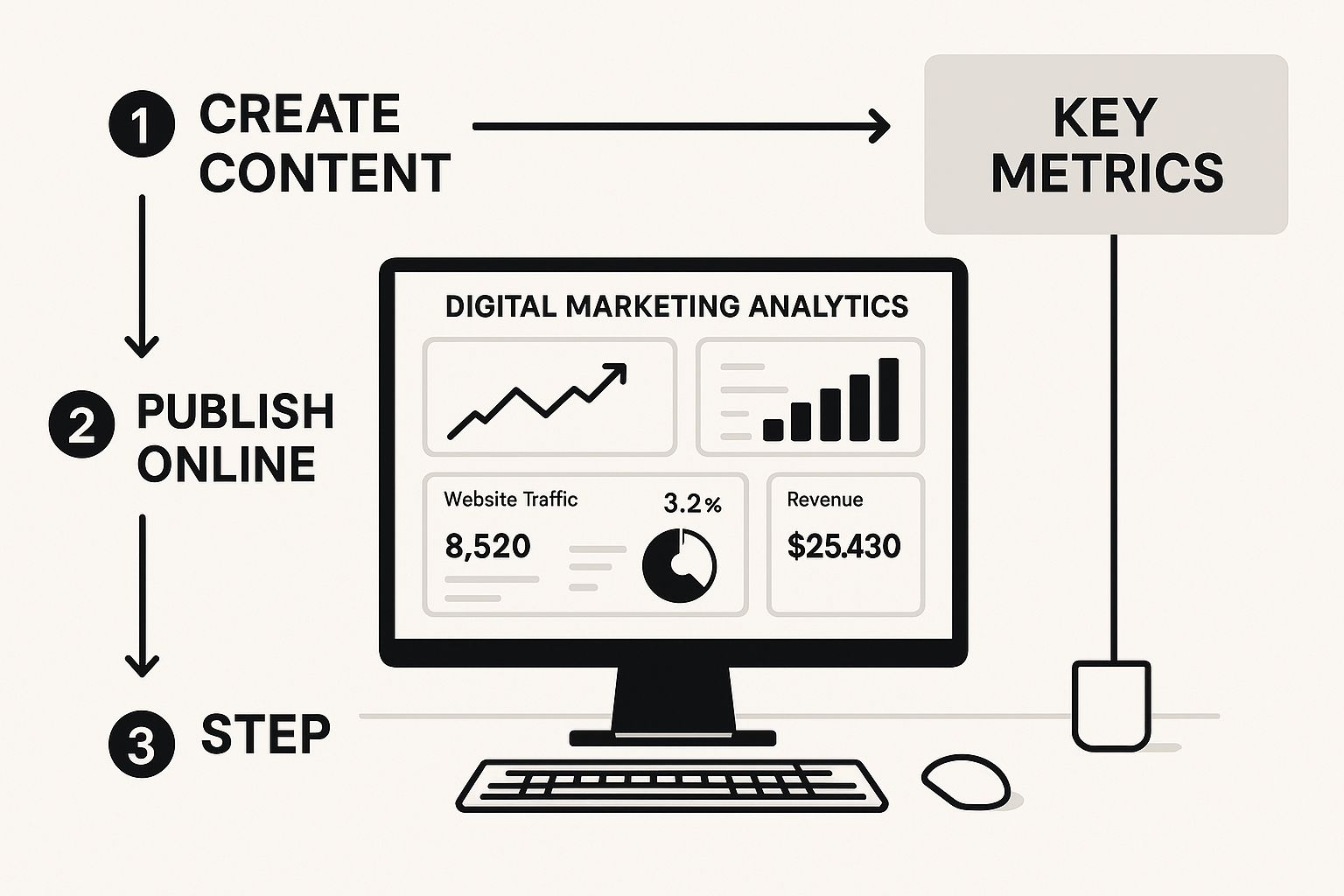
This kind of focused dashboard cuts right through the noise, showing you only the critical metrics needed to make profitable decisions.
The Power of Precise UTM Parameters
Once your conversion actions are firing correctly, the next job is to understand where those conversions are coming from. This is where Urchin Tracking Module (UTM) parameters become your best friend. Think of them as simple tags you add to your ad URLs that tell Google Analytics exactly which campaign, ad group, and keyword drove a specific visit.
So many agencies get this wrong. They either use UTMs inconsistently or create a messy, disorganized system that makes real analysis impossible. A specialist implements a rigid, logical UTM structure from day one.
A clean UTM strategy is non-negotiable. It’s the difference between knowing that "Google Ads generated 10 sales" and knowing that "the 'emergency plumber' keyword in the '24/7 Service' campaign on mobile devices generated 10 sales with a 7x ROAS."
That level of detail is what allows for true optimization. It shows you which parts of your campaigns are actually profitable and which are just burning cash. Without it, you're flying blind, making budget decisions based on guesswork instead of hard data.
For example, consistent UTMs can tell you:
Channel Performance: Is your Google Search campaign crushing your Facebook campaign?
Campaign ROI: Does your "Summer Sale" campaign generate a better return than your "Brand Awareness" efforts?
Ad-Level Insights: Which ad copy is actually driving the most valuable customers?
This granular data is the bedrock of any successful advertising strategy. It empowers you to double down on what works and cut what doesn’t, systematically improving your results over time. This lean, expert-driven approach ensures every dollar is accounted for—a level of detail often lost in the shuffle at a large, impersonal agency.
Focusing on KPIs That Actually Drive Decisions
When your tracking setup is solid—pixels firing, UTM parameters in place—the real work kicks off. Big agencies love to dazzle with sprawling dashboards full of every metric under the sun. It looks busy, but half of it is just noise, not insight.
In contrast, an experienced consultant hones in on what matters most. We move beyond superficial figures like Click-Through Rate and drill into the numbers that steer your strategy. By zeroing in on core KPIs, you turn data overload into clear, actionable intelligence.
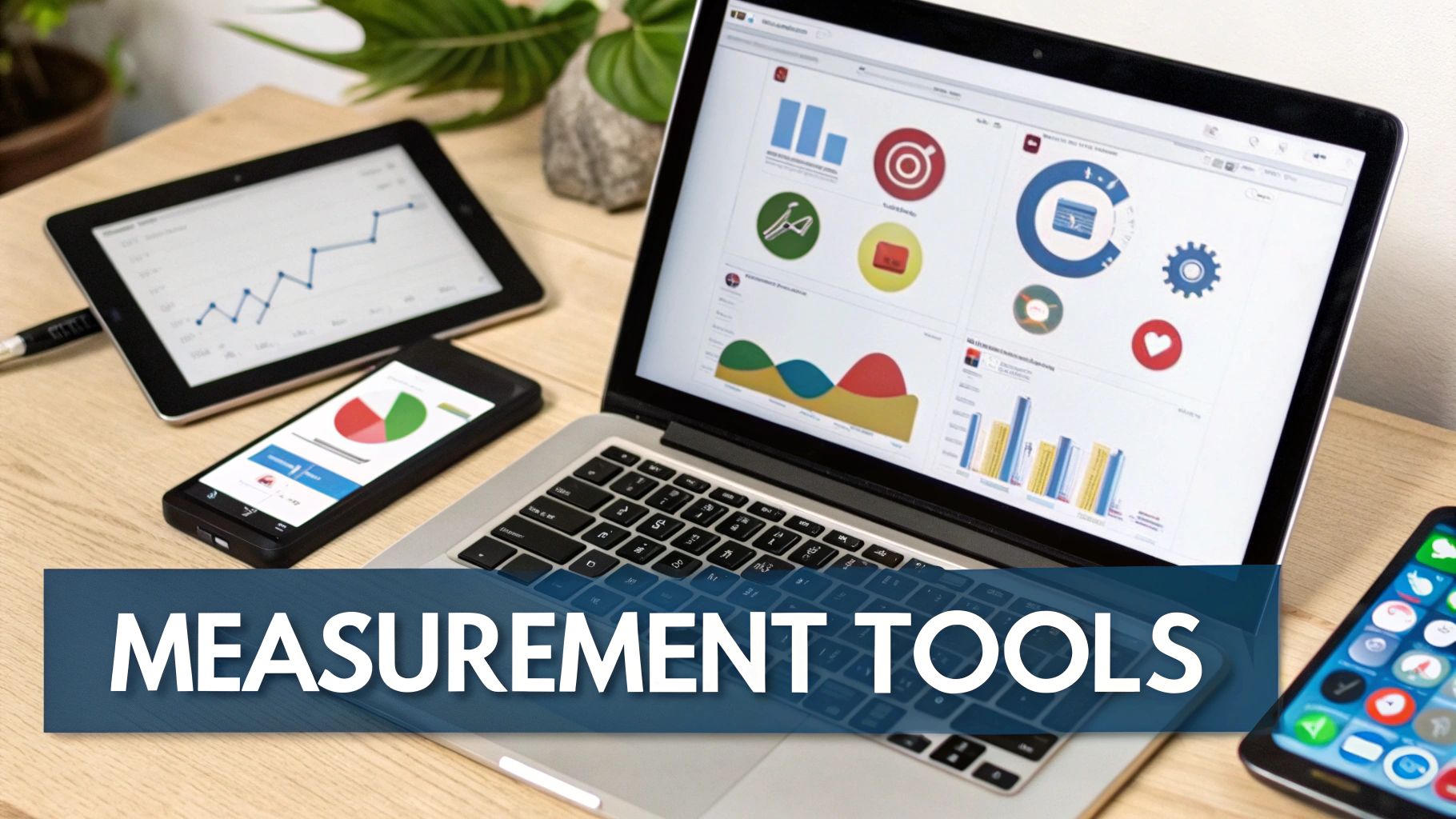
Beyond Clicks To Conversions And Cost
Clicks can feel good—but they don’t pay the bills. Instead of fixating on traffic, ask yourself: how many visitors actually converted, and what did each conversion cost?
Conversion Rate (CVR): The share of clicks that become meaningful actions (sales, sign-ups, downloads). A strong CVR tells you your landing page and offer are striking the right chord.
Cost Per Acquisition (CPA): Also called Customer Acquisition Cost (CAC), this is your total ad spend divided by new customers. If your CPA outstrips the profit each customer generates, the campaign isn’t sustainable.
Consider two campaigns side by side:
One boasts a 10% CTR but only a 1% CVR.
The other has a 2% CTR and a 5% CVR.
On paper, the first sounds impressive. In reality, the second is fueling growth.
From A Single Sale To Lifetime Value
Most agencies stop tracking at the first purchase. A true expert knows that initial sale is just the starting point. To grasp real profitability, you need to calculate Customer Lifetime Value (CLV)—the total profit a customer brings over their entire relationship with your brand.
An agency might pause a campaign because its CPA is $50, and the first sale nets just $40. A seasoned consultant sees beyond month one, knowing that those same customers tend to spend $300 over time. Suddenly, what looked “unprofitable” becomes your best long-term play.
Understanding CLV reshapes your budget decisions. You invest confidently, knowing the lifetime payoff offsets any upfront losses. That’s the difference between chasing short-term wins and building a scalable, profitable engine. For an in-depth guide on making these kinds of profitable adjustments, check out our expert’s guide to optimizing Google Ads.https://www.cometogether.media/single-post/how-to-optimize-google-ads-an-expert-s-guide-to-beating-bloated-agencies
Connecting Ad Exposure To Actual Sales
At the end of the day, every advertising dollar must tie back to real-world revenue. Advanced analytics solutions now let you match ad exposures to actual purchases. By comparing households exposed to your ads against those who weren’t, you isolate the true sales lift your campaigns drive.
With this single-source approach, your KPIs evolve from abstract numbers into precise reflections of your bottom line. To get there, consider implementing a data-driven marketing strategy. An expert consultant will turn those insights into a clear, direct path from ad spend to revenue growth—no smoke and mirrors, just measurable impact.
Analyzing Your Data Like a Specialist, Not a Generalist
Collecting data is the easy part. The real money is made in the analysis—and this is where a seasoned expert separates themselves from a junior account manager reading from a script. An agency's goal is to produce a report. My goal is to produce results.
Learning to read your advertising data with a critical, specialist eye is the secret to unlocking sustainable growth. It's about moving past the generic monthly summaries and digging into the patterns that show you what your customers are actually doing.
This is the shift from just looking at surface-level numbers to asking deeper, more profitable questions. You stop seeing "total conversions" and start seeing the specific behaviors and pathways that create your most valuable customers.
Segmenting Your Audience to Find Hidden Gold
One of the most common agency mistakes is treating all customers as one big, uniform group. They'll report on overall performance, which completely masks the crucial variations happening inside your audience. As a consultant, my first move is always to slice up the data into meaningful segments to see who's really driving the business forward.
Audience segmentation isn’t just marketing jargon; it’s how you find your most profitable customer pockets.
Geographic Segmentation: Are customers in New York City converting at twice the rate of those in Los Angeles? That might signal a need to tweak ad copy or shift budgets to lean into that regional demand.
Device Segmentation: Maybe you have tons of mobile traffic, but your desktop users have a 3x higher average order value. That insight could justify building a whole new landing page experience tailored to desktop users with higher-ticket offers.
Demographic Segmentation: Is your "Age 45-54" group clicking but never buying, while the "Age 25-34" group converts almost immediately? This could mean your messaging is attracting the wrong kind of interest, or your offer just doesn't connect with that older demographic.
When you slice the data this way, you uncover high-performance pockets that are totally invisible in an aggregate report. This lets you double down on what works and cut spend on audiences that just don't convert—a level of detail a generalist approach will almost always miss.
Understanding the Full Customer Journey with Attribution
Think about it: customers almost never see one ad and buy on the spot. Their path to purchase is usually a winding one, involving multiple touchpoints across different channels. They might see a Display ad, search for your brand on Google a week later, and finally click a Remarketing ad before they convert.
This is where attribution modeling is non-negotiable. A typical agency report often defaults to a "last-click" model, which gives 100% of the credit to the very last ad the customer clicked. This is a dangerously incomplete picture. It completely ignores all the earlier ads that did the heavy lifting of building awareness and consideration.
Last-click attribution is like giving all the credit to the person who scores the goal, ignoring the midfielder who made the crucial pass. It tells you who finished the play, but not how the play was set up.
As a consultant, I lean on more sophisticated models to map out the entire customer path. For a much deeper dive on this, you can check out my consultant’s guide to attribution modeling versus agency hype. This approach helps us see which channels are best at introducing new customers versus which ones are pros at closing the deal. That insight is what allows for truly smart budget allocation across your entire funnel.
Spotting Trends with Cohort Analysis
How can you be sure the customers you acquired last month are as valuable as the ones from six months ago? That’s a question cohort analysis was born to answer. This technique groups users based on when they first became a customer, then tracks their behavior and value over time.
It’s about seeing the forest for the trees. Instead of just reacting to daily or weekly blips, you start to understand the long-term health of your customer acquisition efforts. Below is a simplified look at how different data signals can be interpreted.
Common Data Signals and What They Mean
Data Signal | Typical Agency Interpretation | Expert Consultant's Actionable Insight |
|---|---|---|
High Click-Through Rate (CTR), Low Conversion Rate | "The ads are working great! People love them." | "The ad creative is grabbing attention, but the landing page isn't delivering on the promise. We need to test the landing page headline, offer, or overall user experience." |
Rising Cost-Per-Acquisition (CPA) | "Competition is increasing, and ad costs are going up across the board." | "Let's run a cohort analysis. Are our newer customers less valuable over time? Or has a specific high-performing campaign hit audience saturation? We may need to find new audiences or refresh creative." |
Strong Performance on "Last-Click" Attribution | "The remarketing campaign is our most valuable channel. Let's put more budget there." | "Remarketing is closing deals, but what's filling the top of the funnel? Let's switch to a data-driven attribution model to see which prospecting channels are introducing the customers that remarketing eventually converts. We might be starving our best introductory channels." |
Dip in Overall Revenue for the Month | "It was a slow month for the industry. Let's hope next month is better." | "Let's segment by product, audience, and channel. Did a specific product line drop off? Did a key audience's conversion rate plummet? This isn't a 'market' problem; it's a specific problem we can isolate and fix." |
This table highlights the fundamental difference in mindset. An agency reports what happened; a consultant investigates why it happened and builds a plan to either fix it or replicate it. It's about turning raw data into a strategic advantage, uncovering the kind of opportunities a generic report would never show.
Turning Data Insights Into Profitable Actions
Looking at your data is one thing. But the real money is made when you turn those insights into relentless, profitable optimization.
This is where the game is won or lost. It’s also where the speed and focus of an expert consultant completely outmaneuvers a slow, committee-driven agency.
Large agencies often get stuck in "analysis paralysis." They'll build you a beautiful report, schedule a long meeting to talk about it, and by the time they actually do something, weeks have passed. My approach is different: we find an edge, and we exploit it—immediately. That agility is your competitive advantage.

Building Your Continuous Optimization Loop
Great optimization isn’t about random changes and hoping for the best. It's a system—a simple, repeatable process that constantly runs in the background of your account, driving consistent gains.
Think of it as a four-stage loop:
Analyze Data: We start with the numbers to spot a clear opportunity or a problem area.
Form a Hypothesis: Based on that data, we form a specific, testable idea. Something like, "Switching our ad headline from 'features' to 'benefits' will boost conversion rates with our mobile audience."
Test the Hypothesis: We run a controlled A/B test to see which version actually performs better in the wild. No guesswork.
Implement the Winner: Once we have a clear winner, we roll it out and pause the loser. Then, the loop starts right back over with a new hypothesis.
This isn't a one-off project; it’s the engine of account growth. A big agency might run a couple of big tests per quarter. A focused consultant can run multiple, targeted tests every single month. Your gains compound so much faster.
The Power of Small, Data-Driven Tweaks
Massive wins are almost always the result of a series of small, intelligent improvements. An agency juggling dozens of clients just doesn't have the time to obsess over the tiny details of your account.
But that’s exactly where the profit is hiding.
I had an e-commerce client whose Cost Per Acquisition (CPA) was 20% higher on weekends. The typical agency move? Just lower the budget on Saturday and Sunday and call it a day.
We dug deeper. After segmenting the data, we found that while overall weekend performance was weaker, one specific audience—"in-market for luxury gifts"—was converting at an even better rate on weekends.
The winning move wasn't to cut the weekend budget. It was to create a weekend-specific campaign targeting only that high-performing audience with ad copy about "the perfect weekend gift." This single tweak turned their weakest days into their most profitable ones.
That's the kind of granular optimization that gets lost in a bloated agency structure. They optimize for the account average; I optimize for pockets of maximum profitability. To see how these small adjustments hit the bottom line, check out our expert guide on how to calculate Return On Ad Spend.
Where to Focus Your A/B Testing Efforts
To get the most bang for your buck, you have to test the things that actually move the needle. Here are the three areas I always focus on first:
Ad Copy: Test headlines and descriptions. Does a question work better than a statement? Does showing the price help or hurt? Tiny changes in wording can create massive swings in Click-Through Rate (CTR) and Conversion Rate (CVR).
Landing Pages: Your ad makes the promise, but your landing page has to deliver. Test different headlines, calls-to-action (CTAs), page layouts, and images. The experience from ad click to conversion needs to be seamless.
Audience Targeting: Never assume your first audience is your best one. Constantly test new in-market segments, affinity audiences, and demographic combos. You might uncover a goldmine you never knew existed.
It all comes down to using your analysis to drive profitable action. Understanding how data-driven decision-making creates real growth is key. When you embrace a mindset of constant, iterative improvement, your ad budget stops being an expense and starts becoming a predictable, scalable growth engine.
Future-Proofing Your Ad Measurement
The ground is shifting under our feet. With privacy regulations tightening and third-party cookies disappearing, the old ways of measuring ad performance are becoming obsolete.
This isn't some distant problem—it's happening right now, and it's catching slow-moving, bloated agencies completely off guard.
Many large agencies are stuck in outdated methodologies, hoping their old playbooks will magically keep working. As an agile, independent consultant, my approach is fundamentally different. I'm not tied to a massive, slow-to-change corporate structure. This freedom lets me adapt immediately, helping you get ahead of the curve and build a measurement strategy that’s not just effective today, but built to last.
The Consultant Advantage in a Privacy-First World
The future of knowing how to measure advertising effectiveness hinges on adapting to new technologies and respecting user privacy. For big agencies, this is like trying to turn an oil tanker. For an expert consultant, it’s a strategic opportunity to give you a serious competitive edge.
While agencies are busy holding meetings about what to do next, we can be implementing forward-thinking solutions. This isn't just about compliance; it's about building a more resilient and accurate measurement foundation for the years to come.
"A bloated agency sees privacy changes as a roadblock. An expert consultant sees them as a chance to build a smarter, more direct relationship with your customers through first-party data. The goal isn't just to survive the shift—it's to thrive in it."
The global market for advertising effectiveness and ROI measurement is set to explode, projected to hit $16.4 billion by 2034. This growth is driven almost entirely by these privacy shifts. As advertisers pivot toward GDPR compliance and privacy-first tech, those who adapt fastest will win. You can discover more insights about these market trends and their impact on advertisers worldwide.
Pivoting to First-Party Data and Server-Side Tracking
Your most valuable asset in this new era is your own first-party data. This is the information customers share directly with you through website sign-ups, purchases, and CRM interactions. It's more accurate, privacy-compliant, and powerful than any third-party cookie ever was.
Instead of relying on crumbling browser-based tracking, we can transition to more robust methods:
Server-Side Tracking: This moves conversion tracking from the user's browser to your own secure server. It’s more reliable, isn't blocked by ad blockers, and gives you complete control over your data.
Enhanced Conversions: We can use hashed, privacy-safe customer data (like email addresses) to connect ad interactions to real sales, even when cookies are absent.
These aren't complex, enterprise-level solutions that take months to deploy. An expert can implement them quickly, ensuring your measurement stays precise as the rules of the game change.
Embracing AI for Predictive Insights
Beyond tracking, the future is predictive. AI and machine learning are no longer just buzzwords; they're essential tools for filling the data gaps left by privacy updates.
While agencies are still figuring out how to use AI, a specialist is already applying it to drive results. We can use AI to build predictive models that forecast customer lifetime value or identify which new users are most likely to convert.
This allows us to make smarter bidding decisions and allocate your budget with a level of foresight that a backward-looking agency report could never provide. It’s about moving from reacting to what happened last month to proactively shaping what will happen next month.
Ready to stop worrying about the future and start building a smarter, more resilient advertising strategy? As an expert Google Ads consultant, Come Together Media LLC can help you navigate these changes and turn them into your competitive advantage.




